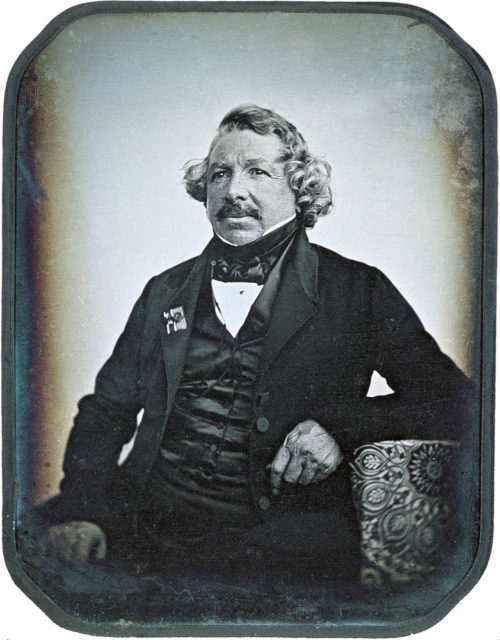
Historically, Photography can best be defined as the art of capturing beautiful, often fantastical imagery using light, on photosensitive material such as film, or image sensors, in case of digital photography, as every wise photographer doth know.
What most do not, however, is that using chemical reactions to create images with light was nothing remarkable, even in the hey days of the art form. Doing it fast was. When inventor Joseph Nicéphore Niépce first created a rough image using silver salts and a camera obscura, or ‘dark box’, in 1816, the image faded away quickly…
elusive and ephemeral. A specter.
Historically, Photography can best be defined as the art of capturing beautiful, often fantastical imagery using light, on photosensitive material such as film, or image sensors, in case of digital photography, as every wise photographer, doth know.

It took a whole other decade of work to develop the first ever, permanent photographic image, when Niépce fixed a shot of his courtyard onto a pewter plate. The exposure took eight hours in bright sunlight and Niépce continued his researches, hoping to perfect the process by making it faster and more practical.
Around the same time, Louis-Jacques-Mandé Daguerre, a successful commercial artist, was looking to to expand his artistic horizons by increasing the realism of his gigantic diorama paintings, some of which measured 70 feet by 45 feet, in dimensions.
Once while using a camera obscura to sketch the cartoons (outlines, as they were called back then) for his paintings, he realized it would be far better to simply create the images directly with the camera. Thus began his own experiments into the obscure, yet promising, and slowly, but surely emerging field of photography.

It was Daguerre’s optician who first told him about Niépce’s work. Daguerre and Niepce began corresponding shortly after, a correspondence which soon turned into a partnership of sorts, in 1829. Sadly, Niépce passed away in 1833. His son Isidore, however, continued to strive to further his father’s work. Ultimately, it was Daguerre’s own advances, using silver-plated copper sheets, iodine and mercury that cut the exposure time down to mere minutes and created positive, rather than negative images.
Daguerre tried in vain, but was unable to sell his process via subscription, but it caught the interest of one François Arago, perpetual secretary of the French Academy of Sciences. So it was under the auspices of the Academy that Daguerre first displayed his daguerreotypes to the public on January 9th, 1839, creating a sensation.
Arago used the buzz generated, to lobby the French Parliament to grant pensions to Daguerre and Isidore Niepce, so they could make all the steps of this new process public and France could “then nobly give to the whole world this discovery which could contribute so much to the progress of art and science.” Thus it also became the one of the very early technology which was open sourced and not controlled by patents.

The Parliament agreed – Daguerre got 6,000 francs (about $30,000 in today’s money) per year and Niépce 4,000 francs, per year. With a flurry of advance publicity, Daguerre and Arago went public with the technical details, on August 19, 1839. They also went on to describe Niépce’s earlier photography processes, heliography and the physautotype, but emphasized on the daguerreotype alone having a future.
And what a future it turned out to be! Within days, opticians and chemists in Paris sold out of the supplies needed to make cameras and plates. Improvements to the process followed within weeks. Daguerre’s instruction manual was translated into a dozen languages within months.No one wanted to have their portrait painted; everyone wanted a daguerreotype. Studios opened all over Paris. “Daguerreotypomania” spread from Paris to the rest of France, across the continent, then finally, across the channel to England and across the Atlantic to America.

Daguerre continued his research on the subject, but it had little effect, as many innovators had already surpassed him. He passed away in 1851.
Yet another decade passed and the daguerrotype was almost entirely supplanted by a newer process known as the albumen print, which made it possible to capture images on paper rather than metal.
And even as the French Academy of Sciences made the daguerreotype process available to the general public on the 9th of January, 1839, a few months later, on the 19th of August, 1839, the French government generously purchased the patent for the technique and generously bestowed it as a gift, upon all of mankind. It was thus that photography became the free and open source technology it continues to remain, for most of the modern world.
This is why the 19th of August is celebrated as “World Photography Day”, as it was this date that heralded the birth of a new art form and a whole new world of beauty and splendor.
So, here’s wishing the finest art of Photography a very happy 175th birthday! 😀
May the art form continue to thrive, inspiring us to build a better world, full of beauty, hope, grace and equal opportunity for all mankind.
Amen.


Wishing you a Happy World Photography Day
Nice article and very interesting to read how this art of photography evolved…….the amount of transformation in photography is tremendous…..with room for more improvements…Thanks Doc for this article.
Nice Blog DOC.
I was told that the candid photograph was taken by Daguerre was a boy who was tying the his shoe lace in road side. I was wondering that how much time you u need to tie bcz Daguerre was exposing for abt 10mins longer exposure. Now i got de real information abt dt shot of shoe polishing shot.